This was published 7 months ago
How flat-pack homes could help solve the housing crisis
By Sue Williams
Does the solution to Australia’s housing crisis lie in a modest, 7000sqm factory tucked away in an industrial zone in south-west Sydney?
There, among neat stacks of precision-sawn and drilled planks of wood, the major components of 30 houses at any time are being painstakingly assembled, guided by lasers and made ready to take to building sites.
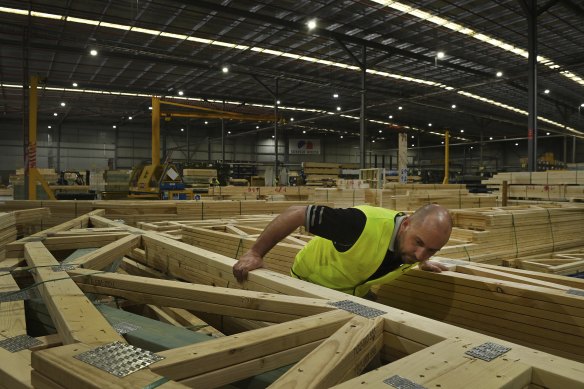
SHAWOOD operations manager Anthony Zerafa inspects the prefabricated product at the factory.Credit: Kate Geraghty
Once there, like a giant version of flat-pack IKEA furniture, the pieces are put together according to the jigsaw masterplan as a quicker, more cost-efficient and, in all likelihood, defect-free way of building a house.
“Our house took about six months to build, and it’s absolutely beautiful – we love it,” said Chris Patterson, sitting in the loungeroom of one of the prefabricated houses he bought for his home lot in Camden, 15 minutes away.
“Preparing all the elements first in a factory meant they were created with real accuracy, and then they could be put together really efficiently. We moved in 15 months ago and already I understand the value of the house has gone up by perhaps as much as 30 per cent.”
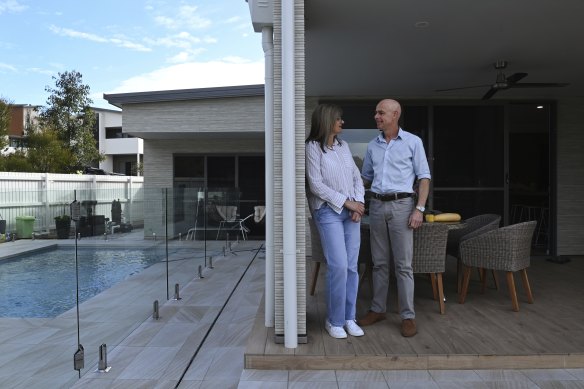
Joanna and Chris Patterson in their Gledswood Hills home, built with prefabricated elements.Credit: Kate Geraghty
Patterson, 52, who, with his wife Jo, 51, runs a consultancy in government relations, bought the two-storey, five-bedroom house for themselves and their blended family of six children, aged from 23 to 16.
It was the first of Japanese developer Sekisui House’s SHAWOOD homes finished for the company’s masterplanned community Gledswood Hills.
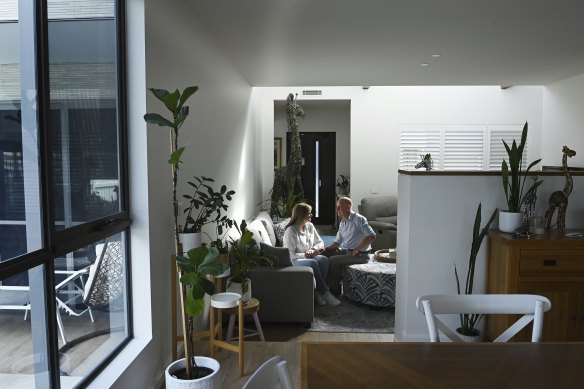
The family’s home took about six months to build.Credit: Kate Geraghty
“Every house is sustainably built as well and has solar panels on the roof and a battery, so the energy bills are very low,” said Jo.
“You can control the heating and lighting and things like garage doors with an app on your phone.
“I was away but I could see one of our sons still had a light on in his bedroom when he’d fallen asleep so I could turn it off. I could even do that from overseas.”
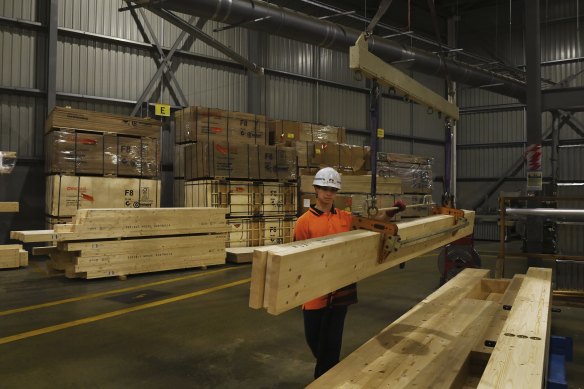
Timber is not left sitting on building sites in the rain. Credit: Kate Geraghty
The factory-prepared, pre-engineered wooden-framed houses have broken the mould for housing in Australia and are providing a credible alternative to conventional building methods on site.
The hi-tech process was designed in Japan and, together with computers and equipment sent to SHAWOOD’s single factory in Australia, in Ingleburn, it’s producing homes according to designs created here and sent back to Japan to be translated into digital blueprints.
In the factory, these guide the machinery to cut beams and posts exactly to size, giving each a code, and then directing the workers on how to assemble some into roof trusses and wall frames before taking them, carefully wrapped in waterproof plastic, to site.
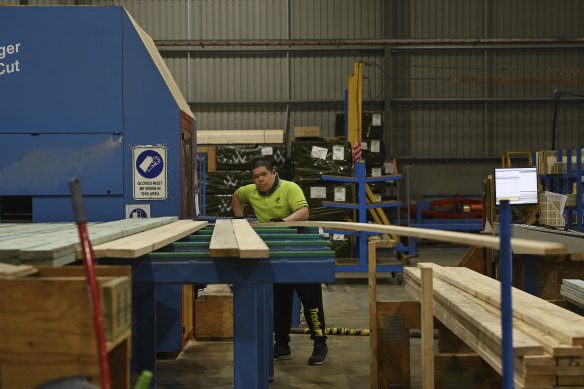
Machines cut beams to size and workers assemble them. Credit: Kate Geraghty
“This means there’s no room for human error because everything happens in a controlled environment,” said operations manager Anthony Zerafa. “You don’t have timber sitting on site for two to three months, getting wet and warped.
“When the elements leave the factory, the builders know exactly where each piece has to go; everything has its place. Everything is already prepared to the millimetre.”
David Malvern, general manager of Sekisui House Australia and a former builder, believes home prefabrication should play a much bigger role, especially in times of such a severe shortage of housing.
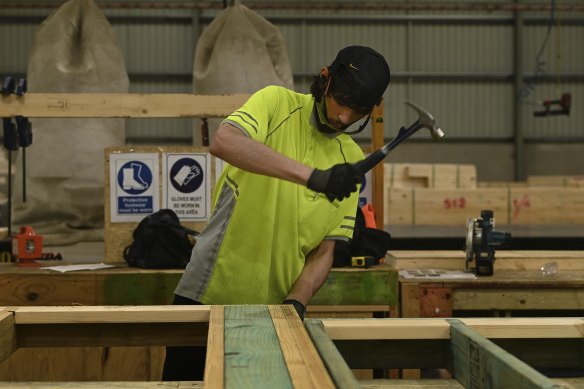
Workers in the factory assemble roof trusses and wall frames.Credit: Kate Geraghty
“In my opinion, this is the future of housing,” he said. “In terms of precision and quality, it takes out a lot of the guesswork that normally happens. Trades in Australia are very competent but, here, everything is cut to a perfect length and pre-assembled so guesswork is taken completely out of it.
“It’s almost like IKEA furniture which comes with a set of instructions, and it’s pretty hard to go wrong. That element of prefabrication is invaluable. You see so many new homes with defective building works as the industry relies on a lot of unskilled labour and there can be a lack of supervision but when you’re sending out a kit, structural defects can’t happen.”
Malvern estimates that, comparing one of these prefab homes with a like-for-like traditional build, a single storey takes an average of four months as against six, and a two-storey home six months instead of nine. “There could also be a significant cost saving if you were comparing the same homes – maybe 25 per cent max,” he said.
The structural timbers are made of laminated wood sourced from sustainable forests in Finland, and the timber for the roofs and trusses are locally sourced and sustainable, with no brickwork used. Instead, there’s a system of cladding made of Japan-manufactured cement-bounded wood particles, part of a system to naturally cool a house in summer and keep it warm in winter.
Get to the heart of what’s happening with climate change and the environment. Sign up for our fortnightly Environment newsletter.